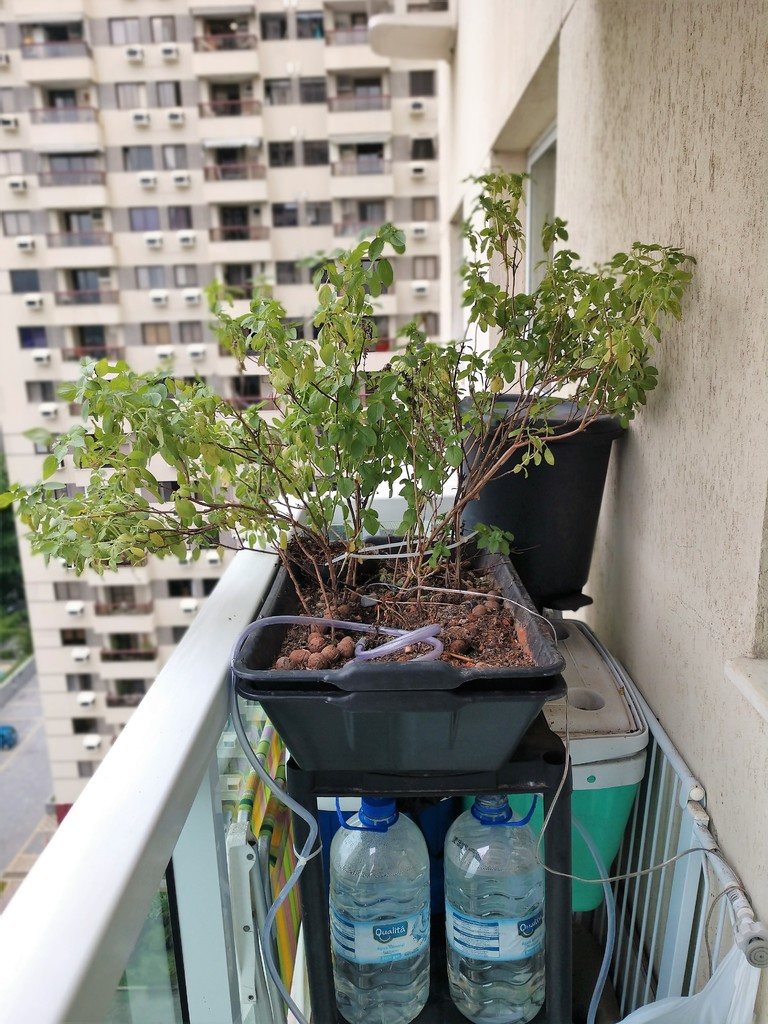
Automatic home plants watering system (under $10 bucks!) - Arduino Nano
thingiverse
This is an under $10 home plants watering system that measures soil humidity and automatically waters your plants when the soil gets dry. It consists of measuring the moisture level in the soil, deciding when it's time to water, then turning on a water pump. A solenoid can be used if you have a hose handy; I didn't, so I used a 5-liter bucket instead. This is my first time coding and using an Arduino, so don't expect a perfect code. No soldering is required, but the control box did end up being quite large due to the wire arrangement. I tried making it smaller, but there just wasn't enough space for all the wires. Here's what you'll need: * 10 M3 nuts * Arduino Nano ($2.79) - https://www.aliexpress.com/item/Nano-CH340-ATmega328P-MicroUSB-Compatible-for-Arduino-Nano-V3/32572612009.html * Step Down power supply ($1.09) - https://www.aliexpress.com/item/Free-shipping-1pcs-XL4005-DSN5000-Beyond-LM2596-DC-DC-adjustable-step-down-5A-power-Supply-module/32730909898.html * Relay module ($0.65) - https://www.aliexpress.com/item/KY-019-5V-One-1-Channel-Relay-Module-Board-Shield-For-PIC-AVR-DSP-ARM-for/32358134833.html * Humidity sensor module ($0.58) - https://www.aliexpress.com/item/Smart-Electronics-Soil-Moisture-Hygrometer-Detection-Humidity-Sensor-Module-For-arduino-Development-Board-DIY-Robot-Smart/32562744759.html * Mini Protoboard ($1.98 5 pieces) - https://www.aliexpress.com/item/5PCS-SYB-170-5-Colors-Mini-Solderless-Breadboard-Prototype-Experiment-Test-Protoboard-170-Tie-Points-For/32671297865.html * Arduino male jumper wires ($1.00) - https://www.aliexpress.com/item/40PCS-20cm-male-to-male-2-54MM-1P-1P-Dupont-cables/32648521256.html * Arduino female jumper wires ($0.67) - https://www.aliexpress.com/item/Dupont-line-20pcs-10cm-2-54mm-1p-1p-Pin-Female-to-Female-Color-Coded-Wire-for-Arduino/32807872201.html After printing everything, I had to cut the wires of the 12v power supply and connect them to the protoboard using male jump wires. Then I connected it to the DC-DC Stepdown power supply and adjusted it to 5v. Next, I used the male jump wires to connect it to another line on the protoboard. I powered the Arduino Nano directly from a separate line on the protoboard, and also powered the Relay board from the same line. I didn't connect the humidity sensor directly to the 5VCC because some sensors can suffer from premature wear when always powered on. Instead, I used the digital IO from the Arduino to power it. The plastic pin on the case is used to fasten the pump and power supply wires with hallermann ties. Here's how the system works: the sensor is turned on using a digital IO, then it measures the humidity using an analog input. If the humidity is greater than 650, the soil is very dry. Another digital IO makes the Relay board give 12v to the pump. The program then compares if the humidity has changed at least 10%, and tries 20 times to make the soil reach 400 units of humidity. If it fails, maybe the water has run out or there's a problem with the pump, then the program goes into an infinite delay. The sensor must be close to the water hose exit, so I used some delays to give time for the water to penetrate into the soil and reach the sensor. Lower delay times between "pump and measure" gave me very wet spots, that's why there is almost 10 seconds between cycles. The pump must be submerged in water at all times, so it should be placed under the water vase. I've been using this system for over a month now, and it uses 5L of water every 1.5 weeks to keep my big vase (80x40x15 cm) from drying out.
With this file you will be able to print Automatic home plants watering system (under $10 bucks!) - Arduino Nano with your 3D printer. Click on the button and save the file on your computer to work, edit or customize your design. You can also find more 3D designs for printers on Automatic home plants watering system (under $10 bucks!) - Arduino Nano.
